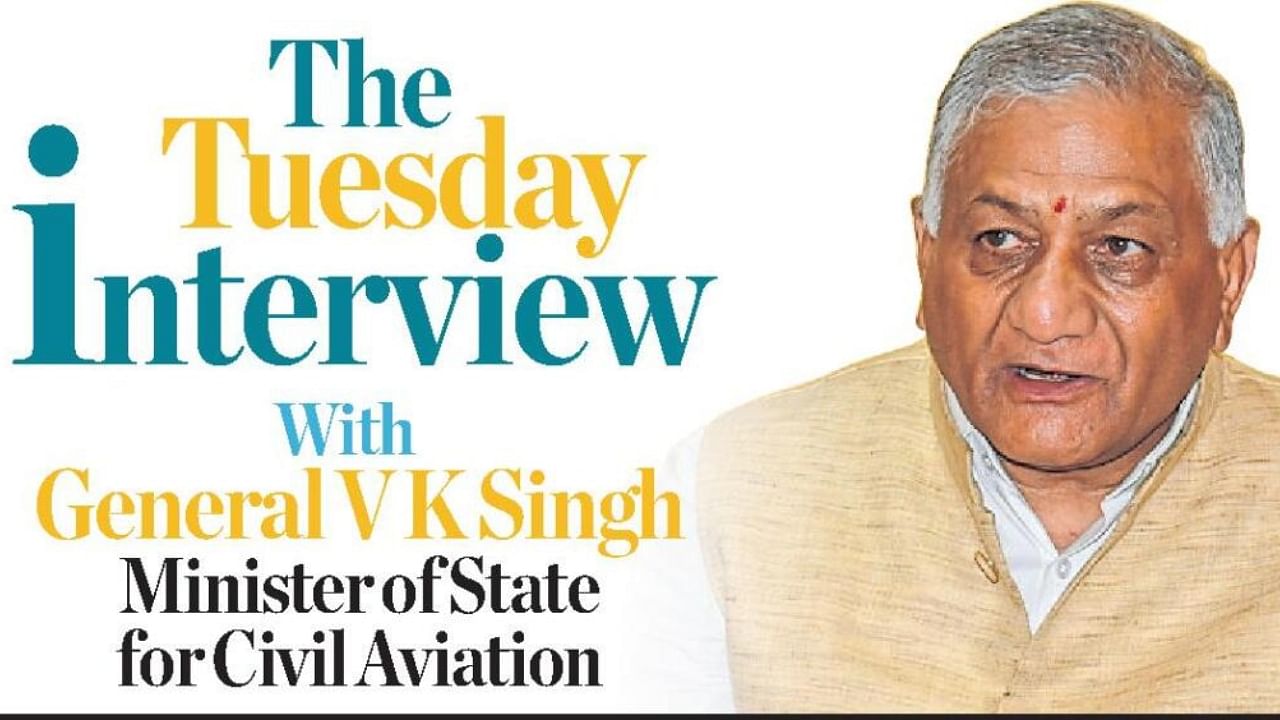
Just as Indian aviation was all set for takeoff, the Wadia Group-owned firm Go First (previously known as GoAir) became India’s first domestic airline since the outbreak of the Covid-19 pandemic to seek bankruptcy protection, stirring an industry-level crisis. In a conversation with DH’s Lavpreet Kaur, Union Minister of State for Civil Aviation, Road Transport, and Highways, General Vijay Kumar Singh (Retd), spoke on the challenges facing Indian aviation as it negotiates a booming demand and how the government could help.
What role does the government see for itself in the ongoing Go First crises, which put thousands of jobs at risk and also hurt passengers’ interests?
The problem with Go First is the Pratt and Whitney engines in their aircraft. The company is unable to manufacture the number of engines that have been required for the last two years. And if you want to change the engines, it will take time to get another type of engine. It will require reconfiguration and a lot of system changes. It’s a very complicated exercise. What kind of bailout can you give?
We are already breathing down the neck of Go Air (Go First). Well, the signs were visible to Go Air (Go First) two years ago. They should have started looking at it from that point on. They are two years too late. So the government will ensure that passengers don’t suffer. And for others who have invested in the airline, some answers will be found.
Now there are fears that the Indian aviation market is becoming an oligopoly and may even narrow down to a duopoly.
No… Akasa is doing fairly well. It is not dependent on Pratt & Whitney, but their only problem is that, as per their agreement, they are getting two planes every month, and it is supposed to go up only after a couple of months. Go Air (Go First) was anyway not doing much, except for a few flights where schedules were hampered. We hope that we will be able to get people who can start something (an airline), which will help improve efficiency. Those efforts are on. It will be too premature to say anything further.
You’ve acknowledged the need to hire FATA pilots and the significant number of unemployed CPL holders in the country. Is the government planning to do something about this?
There’s no shortage of pilots. The shortage is of commanders, and for that, airlines are getting people from abroad. Our people are yet to go up (to senior positions), and that will take time. The number of flight training organisations has gone up. But they’re all rookie pilots, and it will take time for them to get a job, acquire those many hours on a particular type of aircraft, and then get upgraded as per their skills.
Why has UDAN’s penetration been so limited?
Any airline that wants to fly from place A to place B for regional connectivity will be connected; there is an open bid. The airline has to do the study. I can’t force them. We don’t want to end up in a situation like Air India, where it could fly wherever you want, losses be damned. Now, UDAN airports will be made at the discretion of airlines willing to fly the routes and the viability of the routes.
UDAN’s penetration is limited because some of the initial entrants into the fray did not make a roadmap for the future. There are some who brought new aircraft that were much smaller than what was required and were not able to service them as they wanted to. So they folded up, saying, “We don’t want to fly this.” If you have a larger aircraft, you will have a problem with a lower passenger count. So it’s a very awkward problem.
Indian airlines have placed orders for around 1400 aircraft and are expecting to handle 350 million passengers by 2030. Can our infrastructure keep pace?
It is ready. If you look at the capacity increase that has taken place, we’re already catering for capacities that are required in 2030–2035, and we are looking ahead. We are not waiting. MRO has a strange issue, and that is how much the manufacturers are willing to invest. We are trying to force them through the airlines. If Akasa has to buy so much, if Air India has to buy so much, we are telling them you get the maintenance. We are willing to give them incentives so that it becomes easier for them to come and set up MRO.